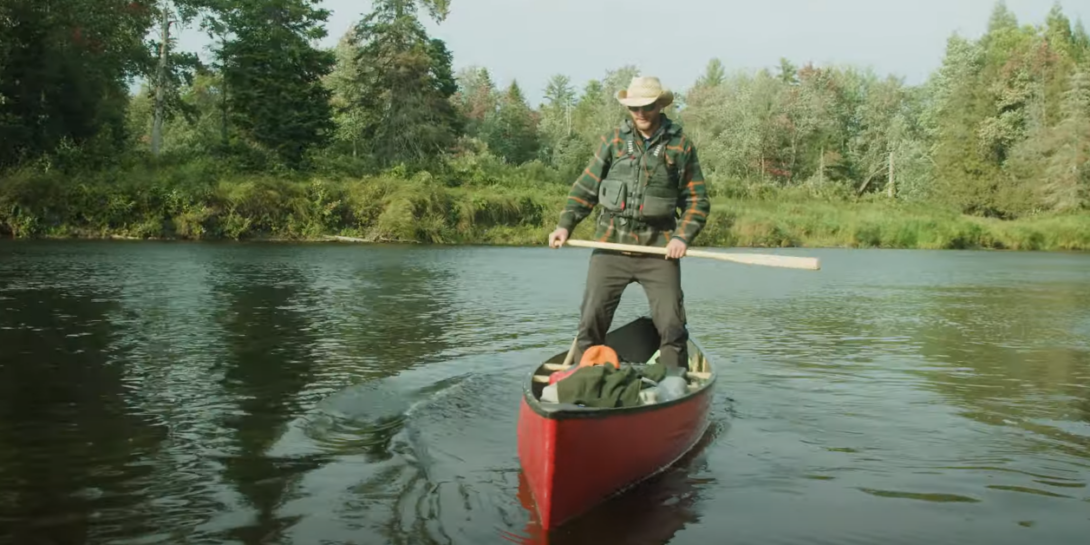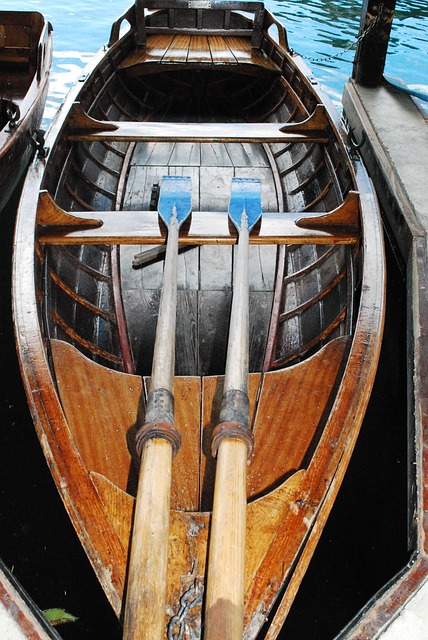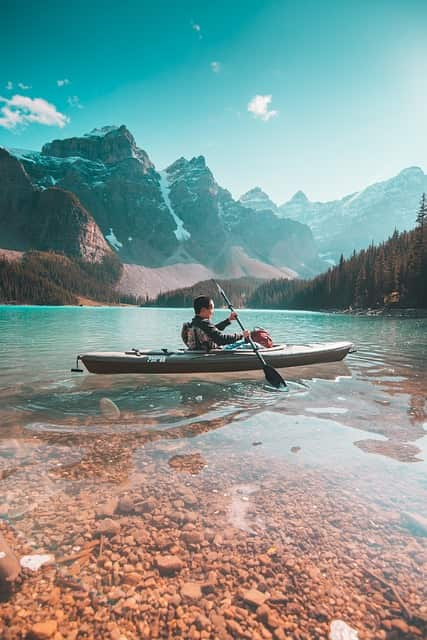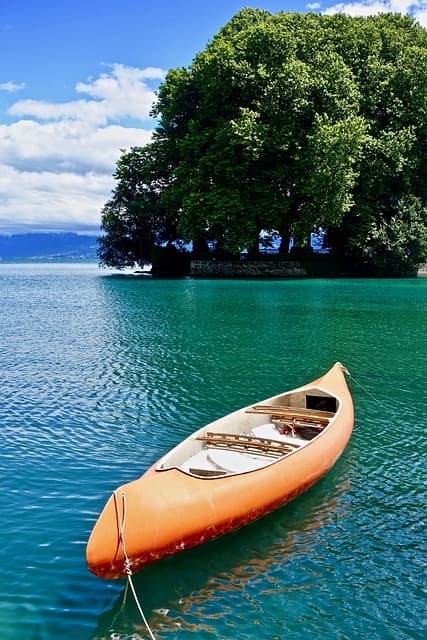Embarking upon the realm of waterborne activities, canoeing emerges as an age-old maritime pursuit that has gracefully traversed through the annals of time, captivating enthusiasts across generations. It encapsulates the art of tranquil drifting, the fervor of spirited races, and the enchantment of embarking upon placid aqueous expanses. The mastery over the equilibrium of a canoe stands as an imperative feat within this domain. Central to this mastery is the meticulous orchestration of the positioning of canoeists, an aspect that exerts an indelible influence on stability and command.
Within the confines of this discourse, we delve deep into the scientific underpinnings that underlie the equilibrium of canoeing, unraveling the enigma that enshrouds its stability, while simultaneously embarking upon an expedition to uncover the preeminent postures that canoeists adopt to achieve utmost stability. If illumination in the form of visual elucidation is sought, a glance at an illustrative video expounding upon the aforementioned concepts shall certainly bestow enlightenment.
The Science of Stability in Canoeing
Understanding stability in canoeing requires a grasp of basic physics. Stability can be classified into two types: primary stability and secondary stability.
Primary Stability
Imagine gazing upon a tranquil lake, the water mirroring the sky above, and a canoe resting on the water’s surface. This serene scene holds a secret: the balance between primary stability and maneuverability. Primary stability is the initial sense of steadiness when a canoe is in equilibrium on calm waters. This stability is the canoe’s first impression, the sensation of security when embarking on still waters. Canoes with high primary stability greet paddlers with a reassuring steadiness, minimizing the initial wobbles that can unnerve beginners. However, this stability can come at the cost of maneuverability, akin to a cruise ship navigating gentle waves.
Conversely, canoes with lower primary stability may tease the line of tipping, creating a dance with the water that requires skilled choreography. But in exchange for this mild turbulence, these canoes offer heightened maneuvering capabilities. Picture an agile kayaker darting through challenging rapids – their craft’s lower primary stability translates into a nimble response to the water’s whims.
Secondary Stability
As the canoe glides across the water’s surface, the paddle is wielded with precision, steering the vessel. But what happens when the canoe tilts, when the laws of physics push and pull at its equilibrium? This is where secondary stability takes center stage. Secondary stability is the canoe’s ability to resist further tilting when already inclined to one side. It’s the trusty companion of experienced paddlers, a stabilizing force when the water grows restless.
Consider the seasoned paddler who leans into a turn, the canoe tilted, yet steady. Secondary stability prevents the canoe from tipping over entirely, providing a level of control that’s indispensable in challenging waters. Canoes with commendable secondary stability transform the art of leaning into a graceful pas de deux, an interplay of balance and finesse.
Factors that Shape Stability
The harmony between primary and secondary stability is orchestrated by an ensemble of factors, each influencing the canoe’s behavior on water. These factors include:
| Aspect | Description |
|---|---|
| Hull Shape | The canoe’s hull is its foundation, dictating the interaction with water. A flat hull yields high primary stability, while a V-shaped hull excels in secondary stability, navigating the complexities of tilted terrain. |
| Width | A wider canoe enhances primary stability, offering a solid base. Narrower canoes prioritize secondary stability, allowing for skilled maneuvers in exchange for a more delicate initial balance. |
| Length | Longer canoes tend to have better tracking and secondary stability due to their increased surface area in contact with the water. Shorter canoes may sacrifice some secondary stability for enhanced maneuverability. |
| Weight Distribution | The distribution of weight within the canoe profoundly impacts stability. A well-balanced load promotes equilibrium, while uneven weight distribution can tip the scales towards instability. |
Optimal Positions for Canoe Paddlers

The selection of a particular stance becomes a complex calculus entwined with variables including the canoe’s intrinsic design, the proficiency quotient of the paddlers, the very character of the aqueous expanse being traversed, and the very essence of the intended undertaking. Behold, as I unveil the quintessential postures that bestow unyielding stability upon the wielders of canoe paddles:
Tandem Canoeing
In the enchanting world of tandem canoeing, where collaboration takes center stage, the positions of the bow and stern paddlers become pivotal. Imagine embarking on a tranquil river or a serene lake, where the canoe is an extension of your partnership, responding to each stroke with grace and precision.
- Bow Position: The bow paddler takes the lead at the prow, charting the course ahead. Positioned closest to the direction of travel, they are the compass of the journey, guiding the canoe through gentle bends and ripples. This position’s responsibilities extend beyond steering; it involves setting the rhythm and pace, akin to the conductor of an orchestra. With a deft stroke, the bow paddler lays the foundation for the journey’s symphony;
- Stern Position: Positioned at the stern, the stern paddler is the powerhouse of the canoe. Their strokes provide the propulsive force that propels the vessel forward. However, their role transcends mere propulsion; they are also the helmsperson, the navigator of currents and tides. The stern position offers a mechanical advantage for steering strokes, a captain commanding the ship’s destiny. Every stroke is a brushstroke, painting the path on the watery canvas.
Solo Canoeing
Solo canoeing is a poetic soliloquy, a dance of equilibrium between paddler and water. The solo canoeist becomes the protagonist of a story where balance and unity reign supreme. In this realm, the center position becomes the protagonist’s stage, where stability is paramount, and the paddle becomes the quill that writes the tale.
- Center Position: Seated gracefully in the canoe’s heart, the solo paddler embodies the essence of balance. This position ensures that the weight distribution is even, enhancing primary stability. Imagine a tightrope walker, a maestro of equilibrium, effortlessly gliding on the precipice between water and air. Every stroke resonates symmetrically, a reflection of the solo paddler’s inner harmony. The center position becomes a fulcrum of tranquility, where the water’s embrace is a partner in the performance.
Choosing the Perfect Position
The choice of canoeing position is a confluence of numerous factors, an intricate melody of variables that compose the perfect harmony. Factors like the canoe’s design, the paddlers’ expertise, the waterbody’s temperament, and the intended purpose of the journey weave together to create a unique composition. Just as a composer tailors their score to suit an orchestra’s strengths, the canoeing positions are tailored to the ensemble of circumstances.
Conclusion
Mastery of stability in canoeing stands as a pivotal skill, demanding a grasp of both primary and secondary stability, judicious weight allocation, and a sound paddle technique. The selection of posture—whether nestled in a tandem canoe with distinct bow and stern positions, or ensconced within a solo canoe with a central stance—is contingent upon the nature of the canoeing endeavor, the proficiency of the paddlers, and the mercurial aquatic circumstances. Embarking upon trials with diverse positions and upholding an equilibrium in weight apportionment will pave the way for canoe paddlers to attain a secure and gratifying sojourn upon the water. For better understanding, check this video illustrating the discussed concepts.
FAQ
Generally, wider canoes have higher primary stability, making them ideal for beginners and recreational paddlers. However, extremely wide canoes might sacrifice maneuverability.
The optimal position depends on various factors, including the canoe’s design, the paddlers’ skill level, and the intended activity. Experimenting with different positions can help determine what works best for you.
Proper paddle technique, such as using efficient strokes and maintaining a consistent rhythm, contributes to stability. Smooth strokes prevent sudden shifts in weight that could compromise stability.
Yes, weight distribution can impact the canoe’s speed. Placing more weight at the stern can help increase the canoe’s speed, but it might reduce primary stability.


